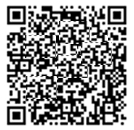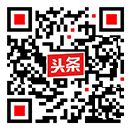Chen Jingfang (Department of Nursing, Shenzhen Third People’s Hospital, Shenzhen, Guangdong 518112)
Medical protective clothing is essential attire for healthcare workers, serving as an effective tool to isolate germs, harmful ultrafine dust, acidic solutions, and salt solutions while maintaining environmental cleanliness. Proper donning and doffing of protective clothing are critical to safeguarding medical staff from pathogens and blocking disease transmission. Therefore, emphasizing the correct procedures for wearing and removing protective clothing is of utmost importance for preventing and controlling infectious diseases.
-
N95 respirator or full-face mask
-
Disposable cap
-
Medical coverall protective clothing
-
Shoe covers
-
Face shield
-
Alcohol-based hand sanitizer
-
Disposable gloves
-
Clean trash bin
-
Medical yellow trash bin
Note: N95 respirators are available in S, M, and L sizes. Where possible, select the appropriate size based on a fit test. Medical protective clothing comes in 170cm, 175cm, and 180cm sizes, and the chosen model should suit on-site usage.
-
Donning Area: A clean, spacious, and well-lit space, preferably with a mirror to verify proper clothing alignment.
-
Doffing Area: A contaminated zone equipped with trash bins, alcohol-based hand sanitizer, and running water.
Perform seven-step handwashing for at least 15 seconds.
Choose a cap that fully covers the head and hairline. Ensure the cap’s edges have adjustable straps or elastic bands to secure hair. For individuals with long hair, tie hair back and tuck it entirely under the cap. The cap’s closures must be positioned at the ears, not the forehead.
-
Loosen the headbands at 2–4 cm intervals. Insert hands through the headbands with the metal nose clip facing forward.
-
Place the respirator over the face, positioning the upper headband at the back of the head and the lower headband around the neck. Adjust for comfort.
-
Mold the nose clip: Press fingertips along the metal strip from the center to the sides until it fits snugly over the bridge of the nose.
-
Leak test:
-
Positive pressure test: Cover the respirator and exhale forcefully. If air escapes from the edges, re-adjust the headbands and nose clip.
-
Negative pressure test: Cover the respirator and inhale deeply. If the respirator collapses inward, re-adjust the headbands and nose clip.
Use standard medical rubber gloves.
Select the appropriate size based on height and weight.
-
Unfold the coverall, unzip from top to bottom, and shake it out.
-
Step into the coverall legs, ensuring toes are pointed.
-
Pull the coverall up, insert arms into the sleeves, fasten the hood, zip from bottom to top, and secure the zipper flap.
Use needle-resistant nitrile gloves. Tuck the coverall cuffs inside the gloves.
Position the shield’s straps at the back of the head and adjust for comfort. Avoid touching the face.
Before entering the hazardous area, assess the fit by performing simple movements: raise arms overhead, bend over, and squat.
Doff in a designated safe area with clear signage.
Perform seven-step handwashing before exiting the isolation ward.
Ensure contaminated outer gloves do not touch the inner gloves.
Rub hands for at least 15 seconds and re-don outer gloves after sanitization.
Lift the shield’s strap from the back of the head with one hand, discard it in a medical trash bin, and sanitize hands immediately. Avoid touching the shield’s outer surface.
-
Grasp the outer edge of the hood and pull it off.
-
Unfasten the zipper flap and unzip from top to bottom.
-
Peel the coverall off from the inside out, rolling it downward to avoid contaminating work clothes.
-
At the ankles, remove the coverall and shoe covers together. Sit or seek assistance if needed.
Sanitize hands and remove outer gloves.
Repeat the seven-step method.
-
Gently pull down the upper headband with one hand while stabilizing the lower headband with the other. Avoid touching the respirator’s outer surface.
-
Remove the cap and inner gloves.
Peel gloves off inside out without touching the outer surface. Finish with handwashing under running water.




